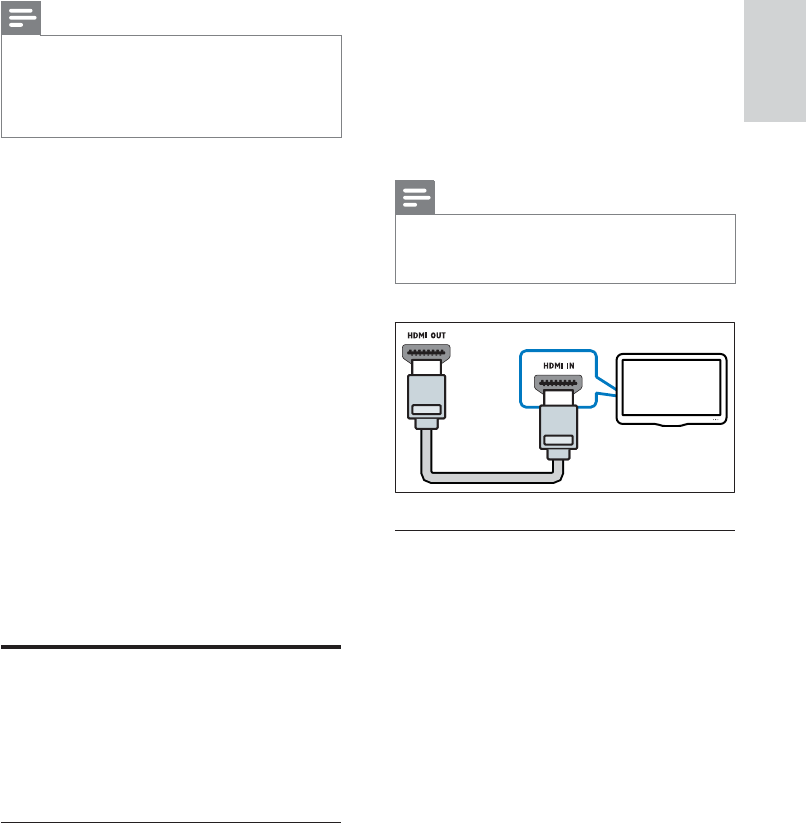
7
English
EN
Note
•
Surround sound depends on factors such as
room shape and size, type of wall and ceiling,
windows and refl ective surfaces, and speaker
acoustics. Experiment with the speaker positions
to fi nd the optimum setting for you.
Follow these general guidelines for speakers
placement.
1 Seating position:
This is the center of your listening area.
2 FRONT CENTER (front center) speaker:
Place the center speaker directly in front of the
seating position, either above or below your TV.
3 FRONT LEFT (front left) and FRONT
RIGHT (front right) speakers:
Place the left and right speakers in the front, and
at equal distance from the center speaker. Make
sure that the left, right, and the center speakers
are at equal distance from your seating position.
4 REAR LEFT (rear left) and REAR RIGHT
(rear right) speakers:
Place the rear surround speakers to the left
and right side of your seating position, either
in line with it or slightly behind it.
5 SUBWOOFER (subwoofer):
Place the subwoofer at least one meter
to the left or right of the TV. Leave about
10-centimeter clearance from the wall.
Connect to TV
Connect your home theater to a TV to watch
videos. You can listen to the TV audio through your
home theater speakers.
Use the best quality connection available on your
home theater and TV.
Option 1: Connect to TV through
standard HDMI
Best quality video
Connect your home theater to the TV through a
standard HDMI connection.
1 Using a High Speed HDMI cable, connect
the HDMI OUT connector on your home
theater to the HDMI connector on the TV.
2 Connect an audio cable to hear the TV audio
through your home theater (see 'Connect
audio from TV and other devices' on page 8 ) .
• When you watch TV programs, press
SOURCE on your home theater
repeatedly to select the correct audio input.
3 On your TV, turn on HDMI-CEC operations.
For details, see the TV user manual.
Note
•
If your TV has a DVI connector, you can use an
HDMI/DVI adapter to connect to TV. However,
some of the features may not be available.
Option 2: Connect to the TV through
composite video
Basic quality video
If your TV does not have HDMI connectors, use
a composite video connection. A composite
connection does not support high-defi nition video.
1 Using a composite video cable, connect the
VIDEO connector on your home theater to
the VIDEO IN connector on the TV.
• The composite video connector might
be labeled AV IN , COMPOSITE , or
BASEBAND .
2 Connect an audio cable to hear the TV audio
through your home theater (see 'Connect
audio from TV and other devices' on page 8 ) .
3 When you watch TV programs, press
SOURCE on your home theater repeatedly
to select the correct audio input.
4 When you watch videos, switch your TV to
the correct video input. For details, see the
TV user manual.
TV


















